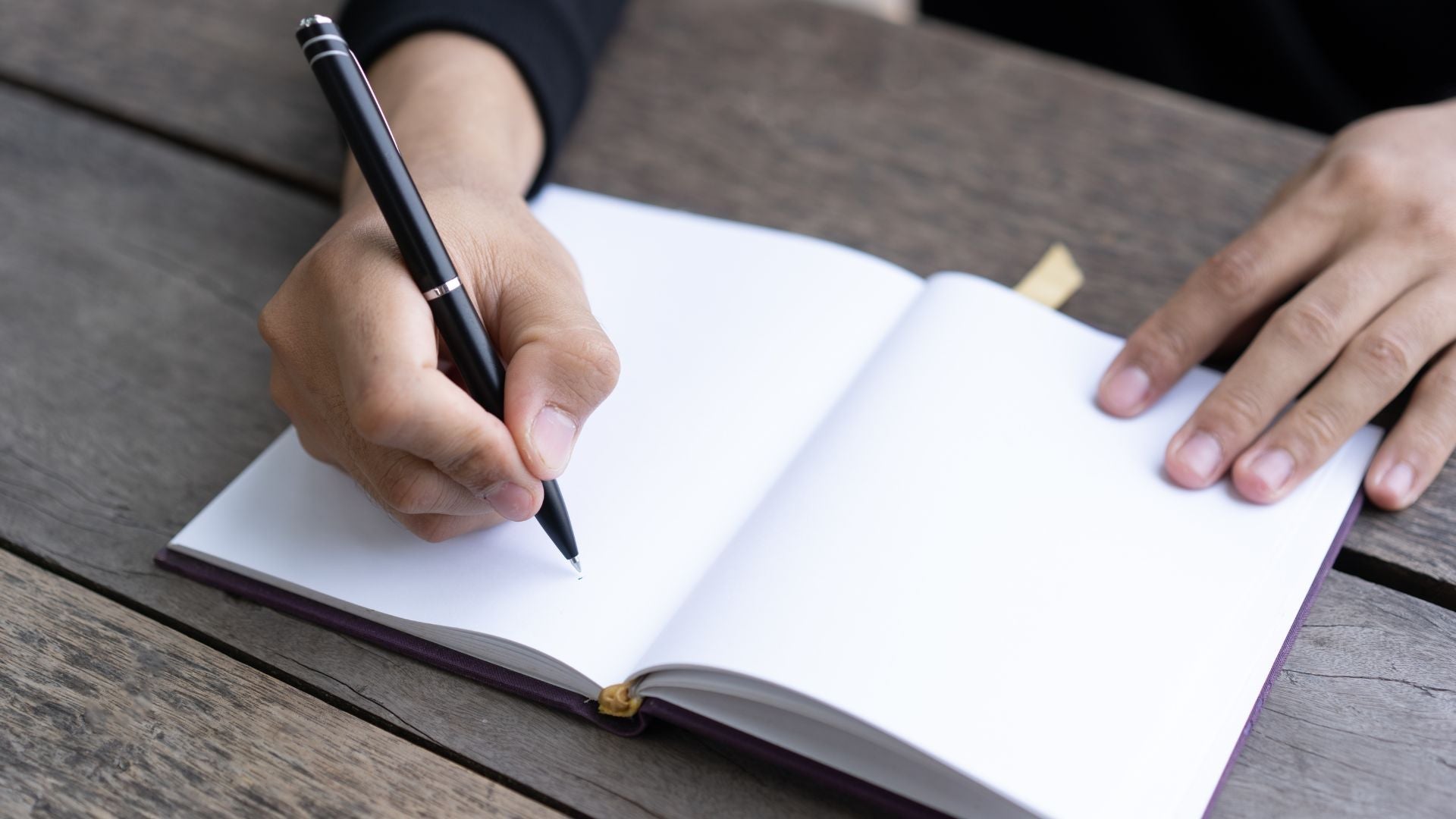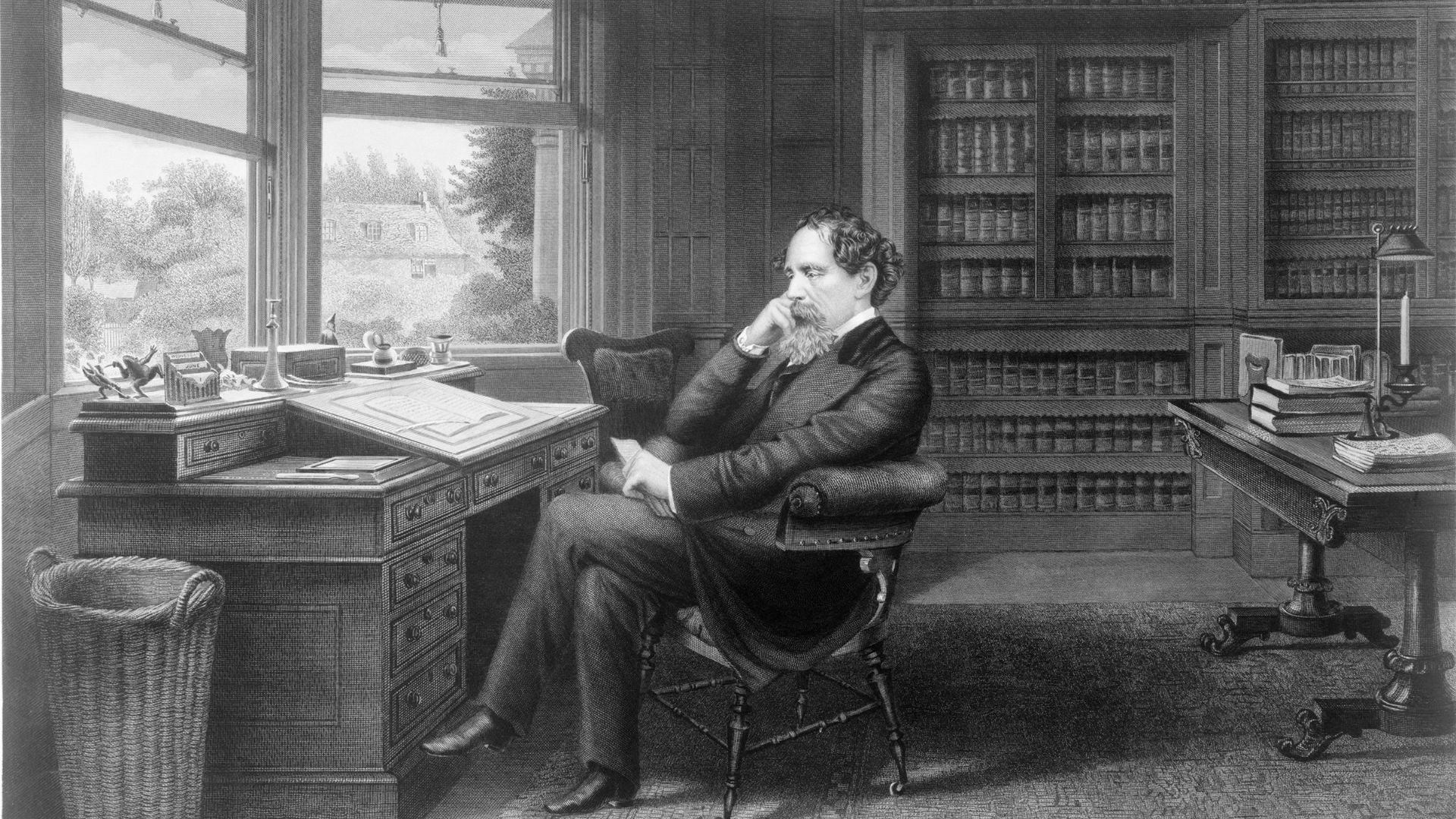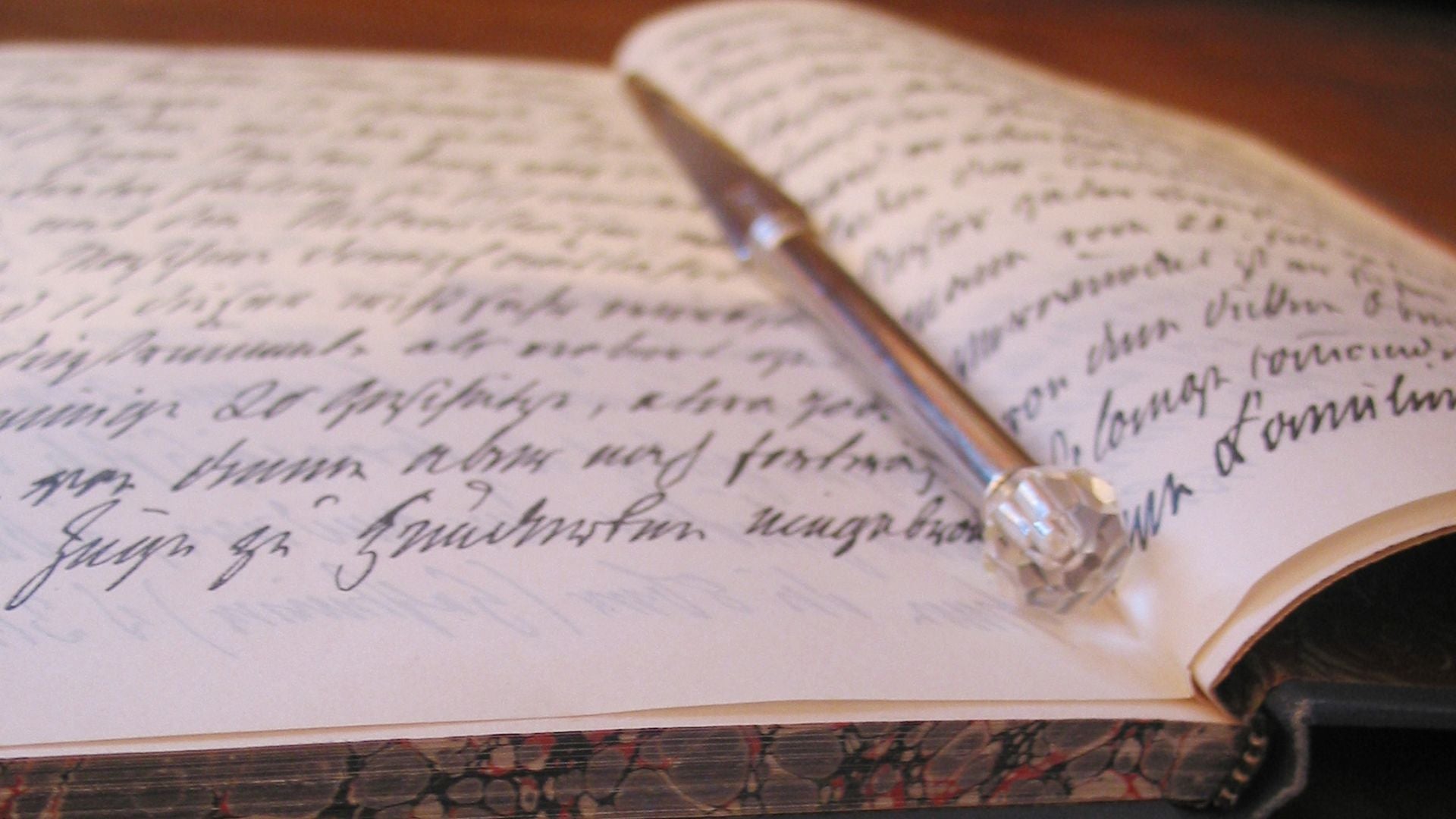Leonardo da Vinci, Samuel Pepys, and Henry David Thoreau did it. So did Virginia Woolf, Harry S. Truman, and E. B. White. Along with them, millions and millions of people of all ages, from all walks of life, and from all parts of the globe, do it too, though perhaps less famously. Just ask any pen enthusiasts you know. Their reasons for keeping journals are unlimited, and they have almost as many ways of organizing their journals, from jamming hastily jotted thoughts written on scraps of paper into tattered notebooks, to recording the day’s events in beautifully flowing script on thick paper bound between handcrafted leather covers. No matter why or how we record our thoughts, keeping a journal is important to many of us. We welcome the time we set aside to be alone with our thoughts, with only our favorite fountain pen, some ink, and blank pages in front of us. It is no wonder that journal writing has come to the forefront of our hobby in recent years. At any pen show today, you’ll find almost as many people interested in journals, ink, and paper as there are interested in fountain pens. To learn more about journals and journal keeping, I spoke with Spyro Morfopoulos, Owner/CEO of Epica, a company that has been offering fine leather journals and albums handmade in Florence, Italy, since 2001.
How did you first get involved in selling high quality journals and why did you settle on the name Epica to represent your company?

Embossing a journal
Interestingly, though my heritage is Greek, Cathy (my wife and partner since the late ‘70s) and I fell in love with Italy when we first visited it in 2015, shortly after I retired from a 30-year career in corporate industry. My newfound time and freedom sparked a surprisingly keen interest in more creative and aesthetic aspects of life, probably not too unlike your readers and their affinity for writing and the aesthetics of pens. I thought I might buy an existing small business that would suit my newfound interests and within a few months of searching, the opportunity to acquire Epica presented itself quite serendipitously. After four short weeks of getting to know the founder and owner of Epica via video chats between him traveling through Europe and me at home in California, we met in Florence and signed the deal while seated next to each other on a bullet train to Milano. Early on, I had asked Tari Mannello, Epica’s founder, how he came up with the name and he simply told me that it sounded Italian and befitting the grandeur of luxurious and finely handcrafted books, and that the name would communicate well to an English-speaking audience (96% of our journals and albums are sold to customers in the USA, Canada, and Australia). I have to agree with him; Epica perfectly represents our products.
Spyro, you seem to have acquired a unique position: Chief of Customer Delight. How did that come about?
In my prior career, I held various titles such as Chief of Data Analytics, Chief of Operations, CFO, etc. Shortly after acquiring Epica, I realized that delighting our customers brought me the most pleasure of all, and factually, that is the end product of our efforts...delighting our customers. So, what better way to state it, I thought.

A fun moment in the workshop after handcrafting a custom journal for Disney
Have you seen an increased interest in journaling in recent years? Is there a particular style of journal writing that has gained in popularity?
This is a very interesting question. The proportion of the public interested in journals appears to be declining as our digital world marches forward, but there is a growing niche of passionate journalers. This, really, is our audience —creative people who love to write. And with the advent of bullet journaling, created by Ryder Carroll just within the last decade, an entire new generation of young people have discovered the pleasure and practical benefits of keeping a journal.
What do people tell you are the benefits of journaling?
You’ve thrown me a softball with this one, Paul. There are hundreds or even thousands of documented studies delineating the benefits of putting one’s thoughts and plans in written form. Benefits that nearly everyone can relate to easily are: clarity, mindfulness, getting more organized, and creative expression.
Journal writing is generally considered to be a solitary activity. Are there ways journal writing can be shared with others?
Well, I think it is a solitary activity to begin with but many couples, including our own son and daughter-in-law, like to swap journals with each other periodically to gain an even more intimate view into their partner’s thoughts and musings.
Can you share any habits or activities that help make journaling more rewarding?
There is a young woman whom we have collaborated with and who has published many videos and even a guest blog for Epica on this topic. We have been really fortunate to serve many really terrific writers and passionate journalers who have penned guest articles for Epica to share their stories with others. One in particular is a gentleman now in his 90s, and who has been writing daily since his mother gave him a journal on his sixteenth birthday! I would encourage your readers to look up the JournalJoy channel on YouTube, and also to peruse a myriad of guest articles at epica.com/blog.
What makes for a good journal? Are different types of journals better suited for different purposes?
Candidly, any bound collection of pages is suitable for journaling. Inexpensive paper-cover notebooks (composition books) can be a perfect medium for random thoughts and notes, and dotted-page journals are great for planning and organizing one’s daily life. Refillable journals are terrific for casual writing as the pages can be pulled out when full and saved in one’s library or discarded. Softcover books make for a great companion while traveling, and then we come to the truly exotic and generational journals that are truly meant to be admired in the present and then passed on to future generations.
What characteristics of paper are best suited for fountain pens and various inks?
The three key characteristics of paper would be that it limits feathering, ghosting, and bleeding. Also, quick-drying paper and ink are essential for lefties in particular! Fine-quality paper will result in more shading and saturation of the ink, as well as much more crisp and defined writing that highlights the ink quality as well as the writing itself.
What are the benefits of archival-quality and acid-free paper?
If you want your words to last, stick with acid- and lignin-free paper. Over time, such archival-quality paper will retain its composition and continue to be legible and enjoyed by future generations.
How important is the binding of a quality journal?

Hand stitching a bespoke journal
Well, that’s where craftsmanship really stands out. There are YouTube videos that teach one how to make a softcover journal, which is the simplest style of bookbinding. Hardcover books are an entirely different matter. They require substantially more skill to ensure that the binding will perform over time, and also for the pages to lay flat when opened. Our master bookbinder, Andrea, was actually bestowed a degree from the Ministry of Culture in Italy for his work in ancient bookbinding, and I can tell you that we hear from customers weekly singing his praises. The binding is the key to a quality journal that will last for generations.
You offer a variety of high-quality papers and covers for your journals as well as different types of journals. From a journalist’s perspective, what are the advantages of being able to choose from so many kinds of papers and journals?
We have serial journalers who will only use our journals featuring handmade paper from Amalfi, Italy, and others who write on different media depending on the content and the pen that they are using. Size is also a big consideration, quite in addition to the paper and leather color. A habitual journaler might keep a pocket or handbag-size journal on hand all the time, and also have a desk-size journal in their office. I’m often surprised to hear of the many different ways people use these unique sizes. I think it really comes down to preference and having enough choices to meet the variety of customers’ desires.
To those who are interested in purchasing their first luxury journal, what features do they have that other journals don’t have? How might those features enhance their journaling experience?
A luxury journal has an aesthetic quality that is perceptible, from the appearance to the leather texture, and, of course, extending to its durability and paper characteristics. At Epica, our top-selling journals are those eclectic journals that cannot be found elsewhere. We also offer a bespoke service whereby the customer can select from a palette of fine Italian leather, custom spine treatment, pre-printed pages, and the widest array of personalization options found anywhere. All of these feature choices allow a discerning customer to create a journal that not only has heirloom quality but that is truly one of a kind.
The hand-made wood and leather covers that you offer remind me of the way books were covered centuries ago. Is that just coincidence or is there a historical connection to the past?
Florence is renowned for its tradecrafts, leather and bookbinding in particular. With Andrea’s pedigree and prior experience restoring historical books for the National Library in Florence, we definitely have a connection to centuries-old technology in the craftsmanship and style of our books. Interestingly, the lumber from which the wood for our wood-cover journals is milled came from beams in centuries-old homes and barns around the countryside. Suitable pieces are selected and milled in our Florence workshop. Sadly, Piero, the craftsman who had been handcrafting wood covers for us these many years retired during the pandemic and we have not yet found another who can mill the wood for Epica.
Is there anything in your experience of producing luxury journals that you have found to be especially rewarding?
There are two aspects of this little business that I truly love—spending time with our artisans during our month-long annual visits to Italy, and collaborating with our customers to create a memorable keepsake, whether for the present or as a generational memento.
Do you see any future trends or new developments in journals and in keeping a journal?
Overall, I’d say that the hallmarks of journals and journaling are about the tradition of bookbinding and the practice of keeping a journal. However, as we have witnessed just a few years past, someone like Mr. Carroll comes along and introduces a concept to young and old, a way to journal that is completely different. Can it happen again? I hope so!
We live in a world that is ever more reliant on technology to communicate thoughts and ideas. How will writing, by hand, in journals remain a relevant activity?
This is very true, and I hear from customers often that they are saddened to see technology overshadow the joys and benefits of writing in one’s own hand. I’d like to think that there are enough vocal proponents of these benefits to inspire and encourage young people, in particular, to write. We have enjoyed collaborating with a really fine national organization that provides young and mostly disadvantaged girls one-to-one mentoring to inculcate the habit of writing while they are still in their teens (and being bombarded with 40-character social media posts). Two years ago, an alumnus of the WriteGirl program was invited to speak at our President’s inauguration, an honor that has been given to only five others ever. I’m quite proud to be able to contribute a handcrafted journal to these young women as they graduate the program each year.
We are grateful for our relationship with Paul Erano, publisher of the Fountain Pen Journal, where this article originally appeared. Your comments are always welcome and appreciated.








